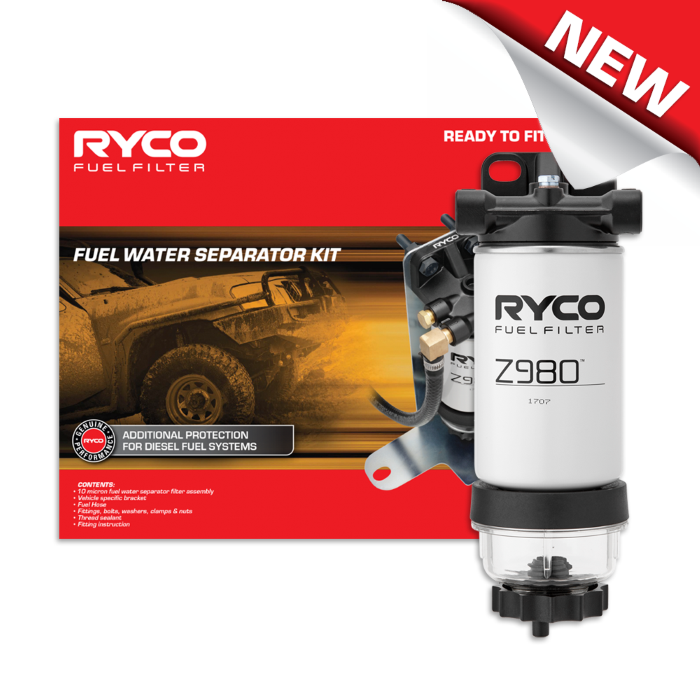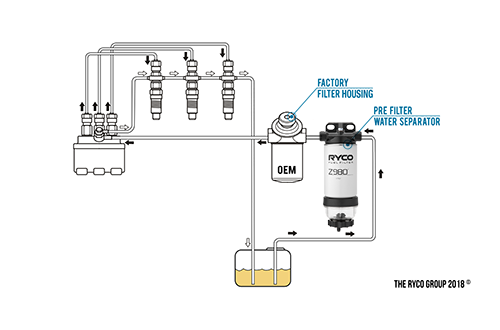
The installation of an additional fuel water separator is the number one investment serious modern diesel vehicle owners can do to help prevent expensive repair and maintenance cots of diesel fuel systems.
These vehicles now require filtration levels not seen in earlier fuel delivery systems or in vehicles systems not designed for Australian conditions.
These diesel systems require extremely fine levels of filtration due to super tight clearances in pumps and injectors. To avoid blockage or abrasive damage that can severely impact performance.
Fuel water separators are an important preventative measure for the protection of fuel injectors, especially common rail systems, which are incredibly efficient but intolerant to water and contaminants. They are designed to reduce the impact of water that has entered the fuel supply via seepage in storage tanks or condensation build up, while at the same time providing additional ‘pre-fuel’ filter protection for the standard fuel filter in diesel delivery systems.
The extended range of Ryco fuel water separator kits are designed for application specific vehicles and comes complete with all the components required to install.
Best Practices for Fitment
Before you install the fuel-water separator, have you considered where it will be fitted within the vehicle?
In most applications, the fuel-water separator is mounted in the engine bay because of the relative free space available and the protection offered under the bonnet. It also offers convenient visual access to the “clear” water trap at the base of the separator, allowing the vehicle driver to visually inspect for water build up, and drain as required.

Factory filter housings that do support water separation rely on a sensor to alarm the driver and often do not have a visual water trap to monitor the build-up of water. Upon alarm, the housing may not be easily accessible to drain the build up of water which must occur to prevent fuel component damage.
All fuel-water separators are designed to be installed in line with the factory filter housing. This is known as a series installation, whereby all fuel must pass through both the additional fuel-water separator and fuel filter before reaching components such as high-pressure fuel pumps and injectors.